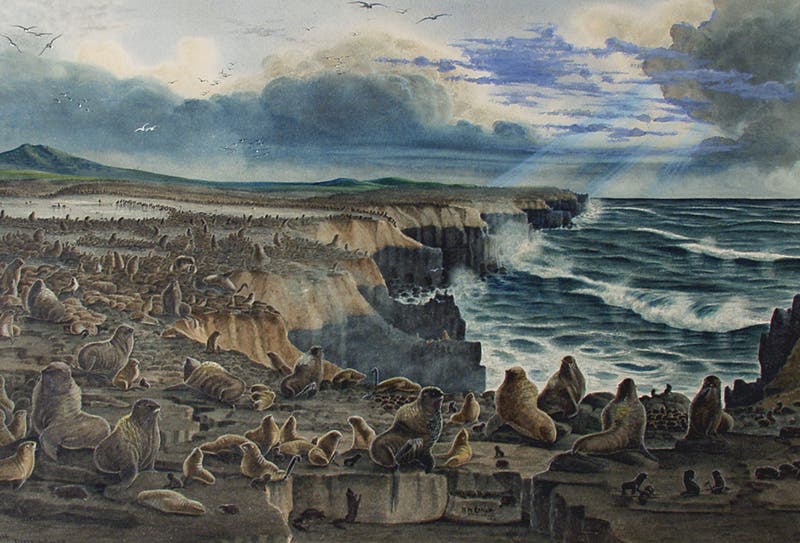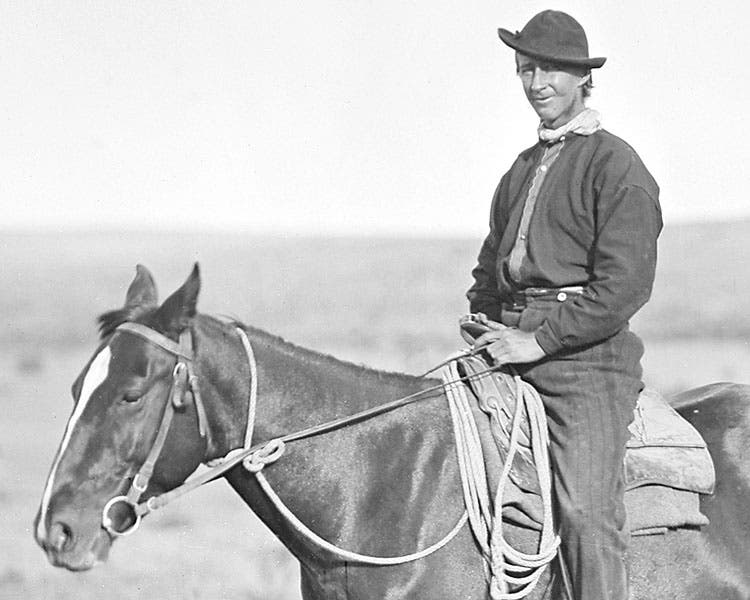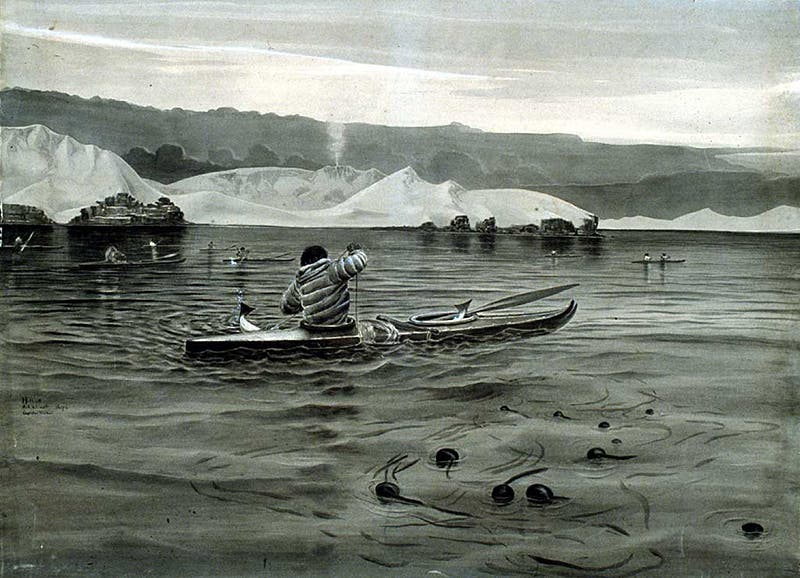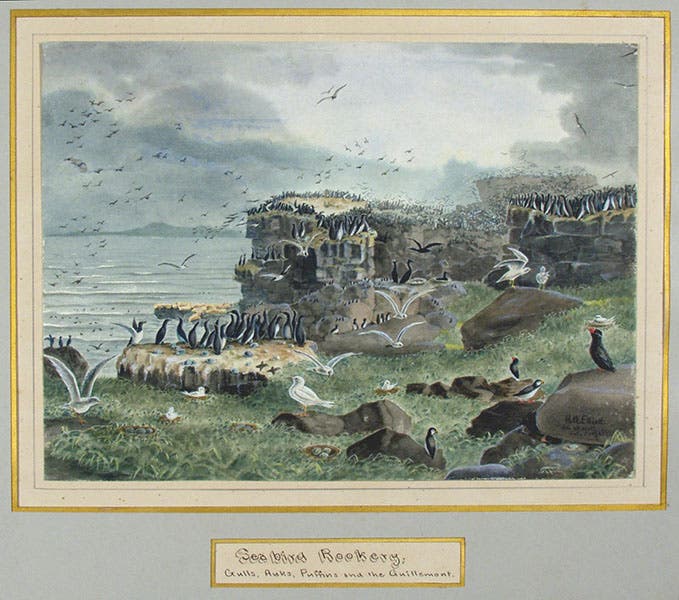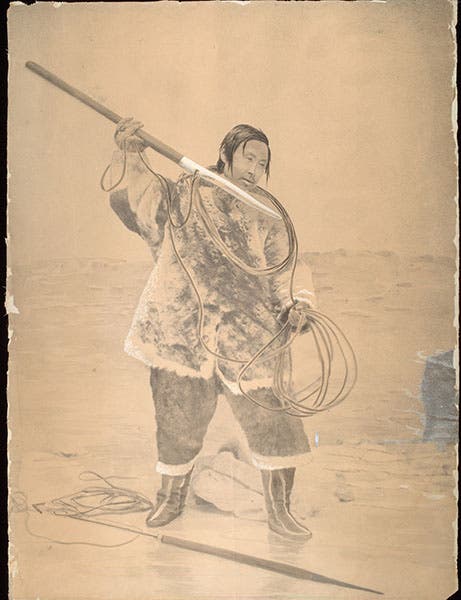Scientist of the Day - Henry Wood Elliott
Henry Wood Elliott, an American artist, explorer, and conservationist, died May 25, 1930, at the age of 83. Elliott made several journeys west in the late 1860s, including spending some time with the Ferdinand Hayden geological survey expeditions to Yellowstone and other points in Wyoming, joining other Hayden survey artists such as Thomas Moran and William Henry Jackson. In 1872, Elliott signed on as a U.S Treasury agent and was sent to the Pribilof Islands, some 200 miles out from Alaska in the Bering Sea. His job was to watch over the fur seal harvest and make sure that the Treasury was getting the tax it was due on each pelt. The Pribilof Islands are the home of most of the world's northern fur seals, and the harvest was big business, both for the sealers and the government. Elliott was also supposed to make sure that the stock of seals was not over-harvested – there were some 4 million seals on the two islands, and the number of seals taken had to be less than 100,000 per year, or else the population would be depleted.
When Elliott was first there in 1872-73, things were fine, with the limit being generally respected. He went again in 1874, and 1876. But 14 years later, a new company was in place, having cornered the monopoly contract to harvest seals on the Pribilof Islands, and the situation had changed dramatically. The new company was slaughtering seals in larger and larger numbers, and in addition, the area was beset by foreign ships who were killing many seals at sea (pelagic sealing). Elliott made a return visit in 1890 to find that there were only a quarter as many seals in the Pribilofs as has been the case in the 1870s, and that officials in Washington were not only turning a blind eye, but encouraging the seal predations, since it brought in more revenue.
So Elliott went public, accusing the government of conniving with the sealers and encouraging over-harvesting to fatten U.S. Treasury coffers. Like most government whistle-blowers, he was fired from his Treasury job in 1891, but Elliott didn't even slow down in his campaign, lobbying Congress and the public for two decades to get some kind of international agreement adopted before the fur seal was hunted to extinction. The public began to respond favorably to Elliott’s crusade. Finally, in 1911, The Northern Fur Seal Convention was signed by Japan, Russia, Canada, and the U.S., banning pelagic seal hunting completely, and imposing strict regulations on Pribilof Islands harvesting. It was the first international wildlife regulation treaty ever signed anywhere, and Elliott gets as much credit as anyone.
Oh, and did we mention that Elliott was an accomplished artist? He painted watercolors everywhere he went, and since he spent years in the Pribilof Islands, he did many sketches: of the seals, and the birds, and of natives in kayaks. Hundreds of these paintings and sketches survive, in the Smithsonian Institution Libraries, and the library of the National Oceanic and Atmospheric Administration (NOAA). It used to be easy to find these online, but all my old weblinks have disappeared for some reason, and I cannot find many new ones. Fortunately, the Alaska Commercial Company, the “good guys” who held the original Pribilof Islands contract before things went south, gave a number of Elliott watercolors to the Phoebe Hearst Museum of Anthropology in Berkeley, and these are available online, and the Museum has been our other major source here for Elliottt’s artwork, along with what I could find in the National Anthropological Archives at the Smithsonian Institition.
We have often mentioned Robert McCracken Peck in this series, Senior Fellow at the Academy of Natural Sciences in Philadelphia, who has supplied us with Peale portraits for a variety of our subjects, has co-written a beautifully illustrated history of the Academy, and has generally been a helpful source of information to me over the years. Well, in this case, he has been my complete source of information, since in 2013, he published an article on Elliott: “A painter in the Bering Sea: Henry Wood Ellliott and the northern fur seal”. It appeared in the journal Polar Record, and it included five more Elliott paintings. In the online (but not the printed) version, the artwork is in color. Unfortunately, most of you, unless you log in from a subscribing institution, will not have access to the article, which is too bad, as it has much more information than we can provide here.
At the end of his article, Dr. Peck pointed out that, as a result of Elliott's successful lobbying for seal hunting regulations (and the fact that the market for seal fur essentially dried up in the last half-century), the Pribilof seal population had nearly recovered its former numbers by the 1980s. That was the bright side. The dark side is that now the seals are threatened anew by commercial over-fishing in the area, not of seals, but of the fish that the seals eat, and the seal population is again declining dramatically. Clearly more action is needed, this time in the form of regulation of fisheries off the Alaskan coast. It looks like the NOAA has some unfinished business in the area.
William B. Ashworth, Jr., Consultant for the History of Science, Linda Hall Library and Associate Professor emeritus, Department of History, University of Missouri-Kansas City. Comments or corrections are welcome; please direct to ashworthw@umkc.edu.


